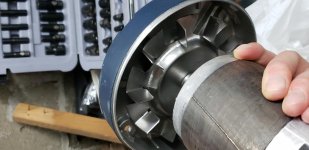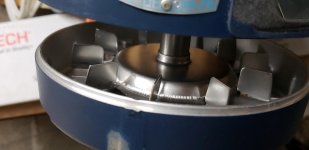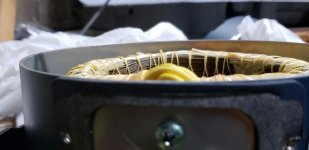Jarrod
Aluminum
- Joined
- Jul 18, 2011
- Location
- Toronto, ON
I got a new motor for my Standard Modern lathe and the conduit box is on the bottom side with the shaft on the right (F1 mounting), adjacent to the drip tray. I tried to shorten the box on the mill, got it a little higher off the tray, but just don't like the direction that's going.
Has anyone flipped their motor mount from F1 to another orientation? I was hoping it was just a matter of taking the rotor out of the stator are flipping it 180 degrees, but there is an internal fan blade that interferes with the stator coils, so now I'm thinking I have to pull off the base and weld it where I want it. Does anyone have any other experience? Am I missing something?
Thanks,
Jarrod
Has anyone flipped their motor mount from F1 to another orientation? I was hoping it was just a matter of taking the rotor out of the stator are flipping it 180 degrees, but there is an internal fan blade that interferes with the stator coils, so now I'm thinking I have to pull off the base and weld it where I want it. Does anyone have any other experience? Am I missing something?
Thanks,
Jarrod





